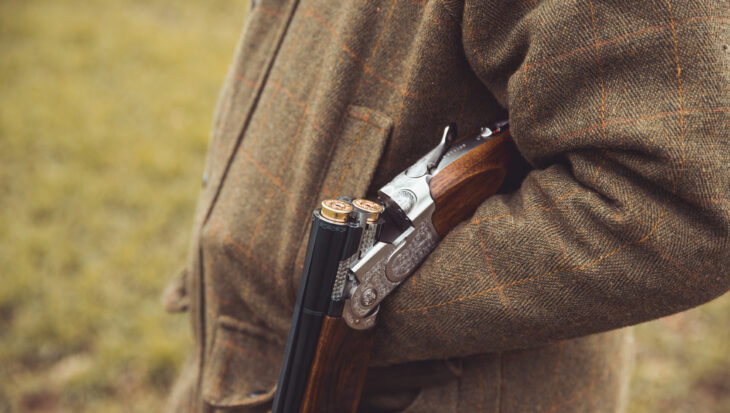Ban on the use of lead shot – finally!
Posted 10 Jul 2025

Posted on the 1st February 2006
A recent edition of Shooting Times magazine carried a three-page article on Britain's 30 Most Wanted Pests. These are animals who interfere with the production of 'gamebirds' and fish for so-called sport shooting and for angling. The list included, incredibly, golden eagles, badgers, heron, red kites and other protected wildlife. With regard to the latter - subject of an expensive reintroduction programme - the magazine instructed readers on where the birds could be spotted. Even more nauseating is the claim the shooting industry makes to being committed to biodiversity. Animal Aid alerted The Times newspaper and the following hard-hitting article was published.
ENDANGERED species such as eagles, ospreys and otters have been named with other protected wildlife on a list of the countryside’s “most wanted pests” published by shotgun enthusiasts.
Shooting Times, the weekly bible of Britain’s million-strong shooting community, is facing condemnation after publishing the list of 30 animals and birds.
The golden eagle, red kite, osprey, heron, peregrine falcon and buzzard stand accused with the hedgehog, otter, badger and the domestic cat of being “voracious predators” that affect the game shooting and fishing industries.
The 114-year-old title describes the animals on its list as “pricey pests” that devour pheasant, partridge, grouse, salmon, trout, hare, pigeon, woodcock, snipe, duck, goose and deer or snatch wild birds’ eggs. The losses hit the profits of estate owners and shooting and fishing syndicates.
Jim Knight, the Rural Affairs Minister, has joined animal welfare groups and the Countryside Alliance in criticising the magazine for vilifying wildlife.
Its list of “most costly pests and the 30 most wanted” was spread over three pages in its Christmas special issue. Sawbill ducks – such as goosander and red-breasted merganser – are called the “No 1 pest” because they eat as many as nine young salmon a day in spring. Cormorants are runners-up, accused of devouring half the adult salmon on some rivers.
Cats rank ninth but the article says: “A mog-mauled pheasant can look as if it was killed by a raptor, so maybe cats get off lighter than they should.”
Buzzards are at No 13. They are “largely dependent on rabbits, but take game birds as well, causing localised damage for keepers”. The case against the hen harrier says: “Studies . . . show the higher the number of harriers on moorland, the lower the grouse bag and the less likely landowners will invest in the land, meaning a loss to local economies.”
Goshawks, at No 17, cause “consternation among keepers. Particularly lethal to black grouse, and indeed any gamebird, it can make a severe dent on stock numbers. Eats red squirrels, too.”
Mr Knight said that he was shocked by the article’s emotive language. “The list includes a number of precious species that are protected by law. Readers of this article may agree that some species can be a nuisance – but this does not excuse their destruction.”
The list also raised concerns among stalwarts at the Countryside Alliance. Tim Bonner, a spokesman, said: “There are still people who are engaged in stupid and pointless persecution of protected species. Shooting organisations and magazines need to be very careful that nothing we say encourages or justifies such behaviour, however inadvertently.” Animal welfare groups were incensed.
Andrew Tyler, of Animal Aid, said: “It is both incredible and deeply revolting that a leading shooting magazine, supposedly committed to biodiversity, should publish a list of pests that includes some of Britain’s most magnificent birds and mammals. The whole thing, in our view, amounts to an incitement to kill.” The RSPCA said: “The label ‘pest’ should not be stuck on any animal that happens to cause some inconvenience.
“The critical questions are: are they causing serious damage? What are the humane alternatives for preventing that damage?”
Camilla Clark, editor of Shooting Times, said: “The purpose was to assess the economic impact of predators and pests on game birds in the UK. Shooting Times would never advocate the illegal killing of a protected species.”
Pest-control marksmen have killed foxes that were digging up turf at Charlton Athletic Football Club. The Premiership club had tried to trap the animals, but someone kept freeing them.
Posted 10 Jul 2025

Temperatures are rising and it’s time to get outdoors, enjoy the weather and tuck into some delicious vegan food! Thanks to an abundance of plant-based options now available, there’s an alfresco option for every tastebud...
Posted 09 Jul 2025
